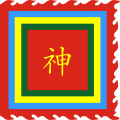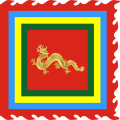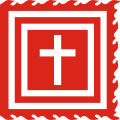| Image | Type of flag | Descriptions |
|---|
Five-colour surname flags
(Cờ họ tộc) |
|---|
 | Bùi (裴) surname flag (Cờ họ Bùi). [5]  | A Vietnamese five-colour flag with the Chữ Hán "裴".
Influences:  |
 | Đặng (鄧) surname flag (Cờ họ Đặng). [5]  | A Vietnamese five-colour flag with the Chữ Hán "鄧族".
Influences:  |
 | Dương (楊) surname flag (Cờ họ Dương). [5]  | A Vietnamese five-colour flag with the Chữ Hán "楊" and the Latin letters "Họ Dương Việt Nam".
Influences:  |
 | Lưu (劉) surname flag (Cờ họ Lưu). [5]  | A Vietnamese five-colour flag with the Chữ Hán "劉".
Influences:  |
 | Lý (李) surname flag (Cờ họ Lý). [5]  | A Vietnamese five-colour flag with the Chữ Hán "李".
Influences:  |
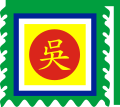 | Ngô (吳) surname flag (Cờ họ Ngô). [5]  | A Vietnamese five-colour flag with the Chữ Hán "吳".
Influences:  |
 | Ngô (吳) surname flag (Cờ họ Ngô). | A Vietnamese five-colour flag with the Latin letters "Gia Tộc Họ Ngô".
Influences:  |
 | Phạm (范) surname flag (Cờ họ Phạm). [5]  | A Vietnamese five-colour flag with the Chữ Hán "范".
Influences:  |
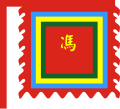 | Phùng (馮) surname flag (Cờ họ Phùng). [5]  | A Vietnamese five-colour flag with the Chữ Hán "馮".
Influences:  |
| Trần (陳) surname flag (Cờ họ Trần). [5] | A Vietnamese five-colour flag with the Chữ Hán "陳".
Influences:  |
 | Vũ / Võ (武) surname flag (Cờ họ Vũ / Võ). [5] | A Vietnamese five-colour flag with the Chữ Hán "武".
Influences:  |




